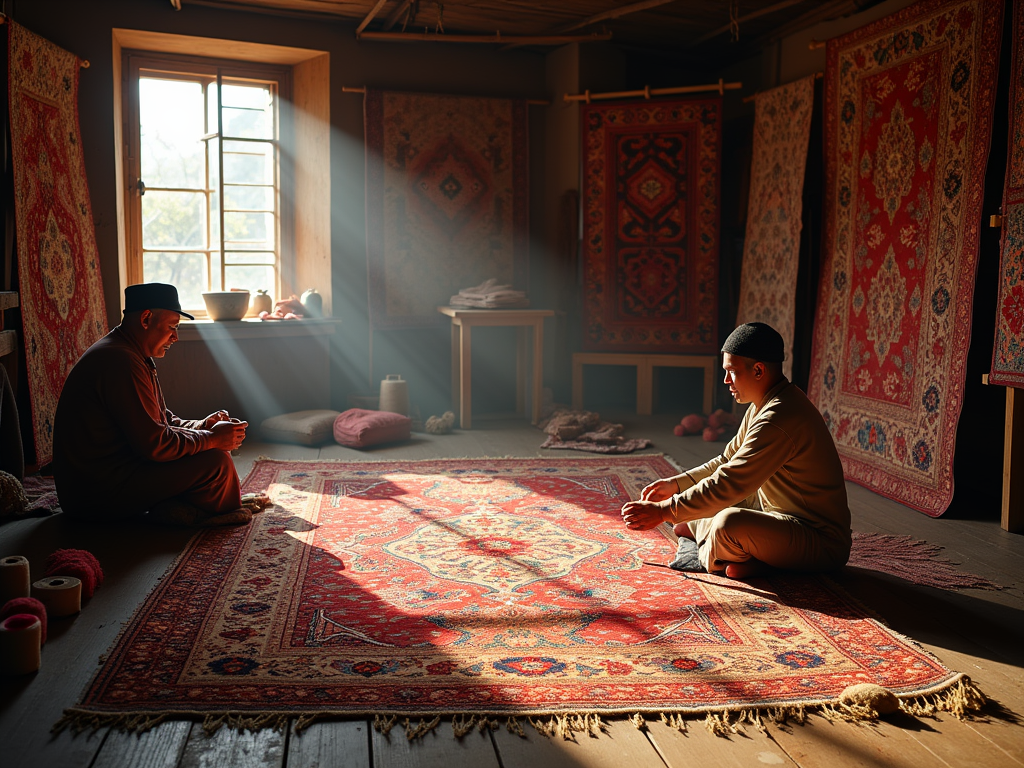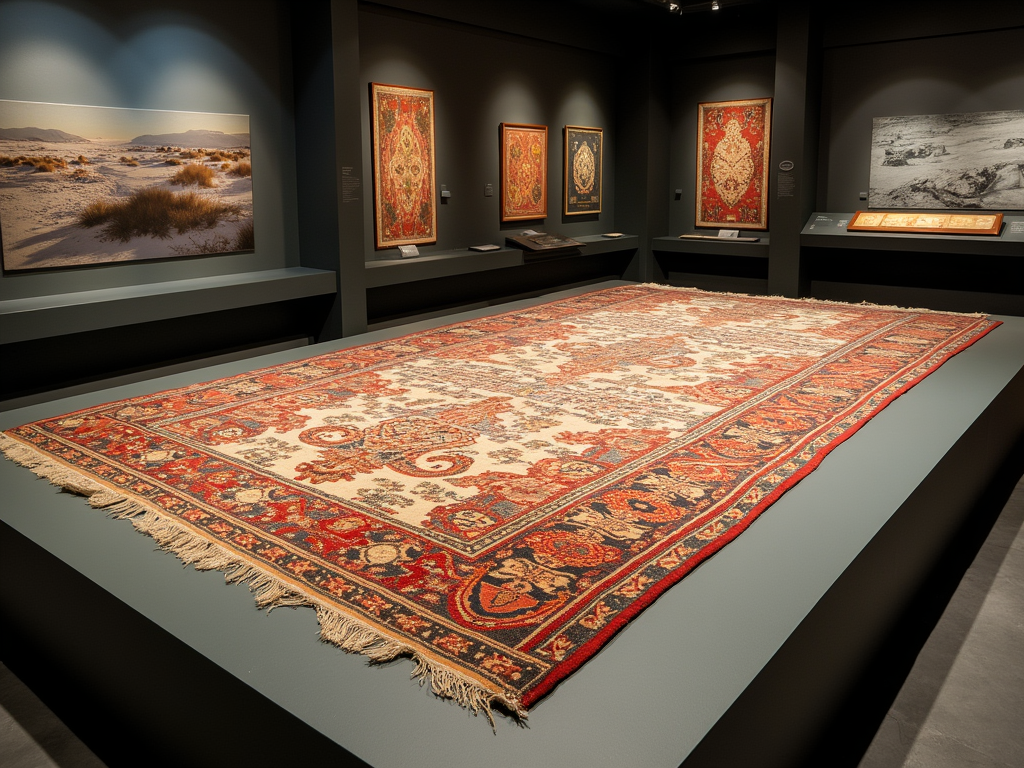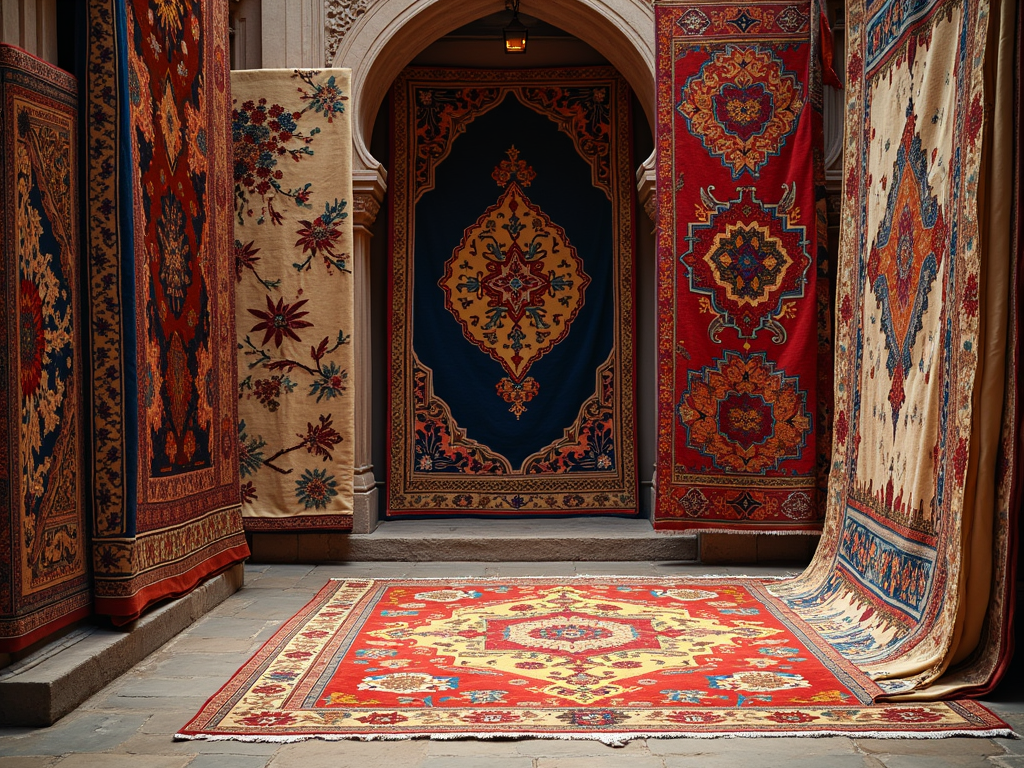
Rug-making traces back to prehistoric times, born out of necessity. Nomadic tribes relied on materials like animal hides, wool, and plant fibers to craft simple yet sturdy coverings that provided protection and warmth. While no single person can claim responsibility for its creation, early communities collectively shaped this ancient craft into an enduring tradition.
Key Takeaways
- Rug-making began as a practical response to harsh climates, offering insulation, warmth, and a barrier against the elements.
- Nomadic tribes turned to readily available resources, including animal hides, wool, and plant fibers, to construct early rugs.
- Over the centuries, what started as a functional craft grew into an intricate blend of artistry and everyday utility.
- Techniques such as knotting, weaving, and felting established the groundwork for the diverse styles familiar in today’s rugs.
- The Pazyryk Carpet, crafted in the 5th century BC, remains the oldest known knotted pile rug, demonstrating remarkable skill and creativity despite its ancient origins.
Rug making stretches back to prehistoric times, where its original purpose was all about practicality — warmth, insulation, and a shield from the elements. Early examples weren’t what you’d call intricate; these rugs were born out of necessity. Nomadic tribes, constantly on the move, crafted them from what they had on hand, like animal hides, wool, or plant fibers. These materials were easy to source and provided durability for harsh climates.
Since the focus started with functionality, the designs mirrored the resources and lifestyles of the people making them. Patterns weren’t as elaborate back then, but they still hinted at cultural identity and local environments. As societies evolved and settled, so did rug making. What began as purely utilitarian slowly transformed into an art that valued beauty and craftsmanship just as much as function. Climate and lifestyle remained pivotal in shaping how materials and designs shifted over time.
It’s fascinating to think about how rugs, such as the iconic Persian styles, became symbols of luxury and cultural significance rather than just insulation for a cold, dirt floor during harsher times. If you’re curious to learn how these rugs differ from others, you might find this piece on area rugs versus Persian rugs interesting. Their evolution tells a story of human innovation — from survival essentials to decorative works of art.
How the Oldest Techniques Shaped Rug Making
Knotting, weaving, and felting laid the groundwork for the artistry seen in rug-making today. Each technique brought its own features to this ancient craft, influencing the styles and functions of rugs over time.
Knotting became essential for the creation of pile rugs. By tying individual knots to the foundation, artisans could craft highly detailed patterns. The density of these knots affects both the look and the longevity of a rug. Persian rugs, for example, are renowned for their high knot density, making them not just durable but also mesmerizing in their complexity. You can dive deeper into how knot density sets these apart by exploring the difference between area rugs and Persian rugs.
Weaving introduced flatweave rugs, which lack the raised texture of a pile but are lighter and often reversible. These rugs are loved for their versatility and smooth finish. Felting, meanwhile, involved pressing fibers together to create a solid, dense material. This technique provided durability and rustic charm, ideal for tough conditions.
When choosing a rug today, understanding these origins can guide your decision. Whether opting for the fine detail of knotting or the straightforward elegance of weaving, early techniques continue to influence both aesthetics and practicality. If you’re curious about where rugs first emerged, there’s an interesting read on rug origins that ties these techniques to their roots.
The Pazyryk Carpet, discovered in Siberia’s Pazyryk Valley during the 1940s, stands as the oldest known knotted pile carpet. Dating back to the 5th century BC, it was unearthed from a Scythian nobleman’s tomb. Its preservation, thanks to the region’s permafrost, offers a fascinating glimpse into early rug-making traditions.
This incredible piece measures approximately 6′ x 6.5′ and features an impressive density of 36 symmetrical knots per cm², showcasing advanced craftsmanship. The detailed design suggests a deep understanding of both aesthetics and functionality in rug-making long before its creation. If you’re curious about how styles like this evolved, consider checking out this overview on where rugs originated. It’s clear the Pazyryk Carpet reflects a mastery far ahead of its time, blending innovation and artistry in a way that’s still admired today.

The Unique Styles of Regional Rug Making
Rug-making styles have always mirrored the distinct personality of their regions. Persian rugs, for instance, are celebrated for their intricate floral designs and a palette rich in reds, blues, and golds. These designs often draw on Persia’s long history of artistry and storytelling. On the other hand, Turkish rugs stand out with bold geometric shapes and tribal patterns that reflect a strong nomadic heritage.
Climate and geography played a major role too. Wool and silk were staples, depending on what was locally accessible, and natural dyes sourced from plants and minerals infused these rugs with striking, earthy tones. For example, Caucasian rugs, known for their sharp contrast of colors and angular designs, speak to a rugged regional terrain. Meanwhile, Indian and Chinese rugs embraced softer patterns and materials, often weaving in cultural influences like religious symbols or ancient mythologies.
Explore more on how styles like Persian or area rugs compare here.

Rug Making in the Modern Era
Industrialization brought transformative changes to rug making. The introduction of machinery made it possible to produce machine-made rugs that cater to a variety of budgets and style preferences. These rugs are mass-produced, making them a practical option for homes looking to combine cost-effectiveness with appealing aesthetics.
Handmade rugs, though, haven’t lost their charm. They remain valued for their craftsmanship, with intricate designs that showcase the skills of rug makers. These pieces often carry a sense of tradition, honoring the craft’s origins. That balance of artistry and function ensures handmade rugs stay relevant in a world increasingly drawn to convenience.
Modern designs continue to evolve, combining synthetic fibers and bold, contemporary patterns that fit current home trends. Synthetic materials, like polypropylene, offer durability and stain resistance, while still capturing the texture and warmth associated with rugs. Some designs even merge traditional patterns with modern twists, resulting in unique creations perfect for today’s interiors.
Machine-made rugs meet the growing demand for quick, affordable solutions, while handmade options cater to those who value the heritage and skill tied to rug making. Both approaches reflect different priorities, but together, they keep rug making vibrant and accessible.
If you’d like to explore more, learn about the fascinating differences between area rugs and Persian rugs. Understanding these distinctions can add depth to picking your perfect rug.
Sources:
Ancient Rugs and Textiles: From the Earliest Times to the 16th Century
Oriental Rugs: The Collector’s Guide to Selecting, Identifying, and Enjoying Oriental Rugs
The Pazyryk Carpet
Rug Making Techniques
